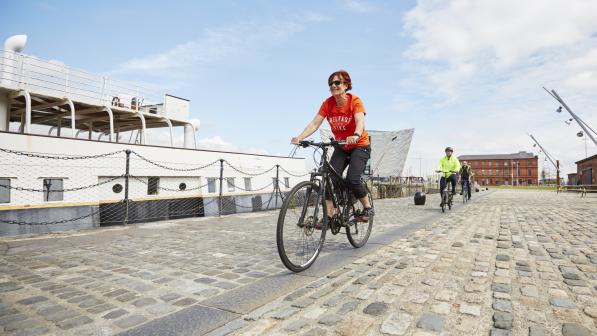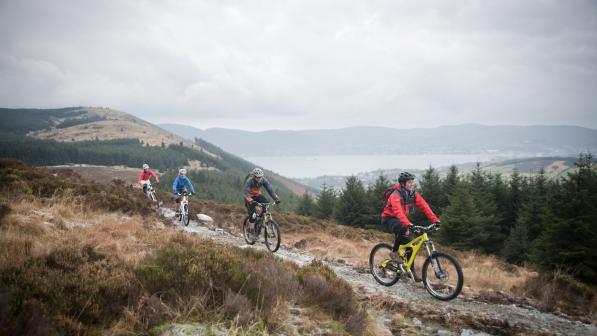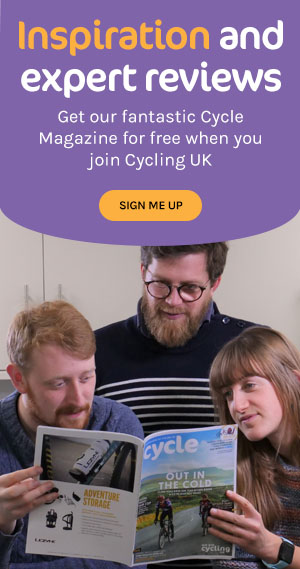How to improve transport cycling in Northern Ireland

We all know the arguments for active travel, but with the pandemic bike boom and Highway Code changes if feels like there’s a subtle shift in transport cycling’s prospects – that the arguments, at least, have been won. I asked Caroline Bloomfield, director at Sustrans Northern Ireland whether we can really transform transport cycling’s fortunes, and if so, how do we get to the point where it’s not just for bold, confident cyclists but accessible to everyone?
How did things like the pandemic cycling boom impact walking and cycling?
I think the pandemic sent a message to decision makers: people want to walk and cycle. COP26 was probably a catalyst. Transport is the biggest greenhouse gas emitter in Northern Ireland after farming.
Is a golden age of cycling starting to feel more than warm words?
A Climate Bill amendment means 10% of the transport budget for walking and cycling, and there’s a new hierarchy of road users with pedestrians at the top, then cyclists, and private vehicles at the bottom. Despite policies and rhetoric, we haven’t necessarily seen budgets and action plans. There’s a new glider [bus] scheme for Belfast with a delivery team and a defined budget, whereas the Belfast Cycling Network plan was published with no budget or delivery team (though a delivery plan since emerged).
If you could transform cycling in Northern Ireland, what would you do?
Invest in a joined-up cycling network that doesn’t stop at junctions. Create a programme of behaviour change support to enable cycling at schools, workplaces and communities through skills training, led rides, maintenance, and route planning. Lots of people haven’t been on a bike since they were kids. Some schools we work with went from 31% to 43% active travel.
Create safe routes to school. In Northern Ireland 50% of children live under one mile from their primary school, and 67% are driven – a really shocking statistic. The main reason is lack of safe infrastructure. Active travel needs to be part of the statutory planning process. In so many schemes like housing developments active travel is thought of afterwards, if at all.
How could we get to the point where transport cycling isn’t just for bold, confident, often male cyclists, but for everyone?
This is a real passion of mine. Our latest Cycling Index survey shows 19% of men in Belfast cycle once a week or more but only 5% of women do. We make it easy and safe to drive but not to cycle. If the infrastructure is there, it will be used. We’ve worked with people with brain injuries to show cycling could and should be for everybody. Maybe we need more female designers; the number of times I talk to engineers who say “Oh, I’m happy with that and I’m a cyclist.” My thoughts are: “You’re happy cycling down a 60mph dual carriageway. Not everybody else is!”
What’s being done to boost cycling in Northern Ireland, and what more needs to be done; any unique challenges?
The Department for Infrastructure (DfI) created a blue-green infrastructure fund for councils with some success; we need sustained long-term investment to start planning properly.
Northern Ireland has about 142 miles of Greenway. The DfI, who manage everything on-road, launched a 10-year Belfast Cycling Network plan but we’ve a long way to go. We’re very good at putting tarmac down, not at putting cycling lanes in.
I think all parties are more in tune with climate and active travel. When push comes to shove and when difficult decisions have to be made, that’s where it’s challenging.









